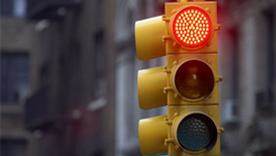- MENU
- HOME
- SEARCH
- WORLD
- MAIN
- AFRICA
- ASIA
- BALKANS
- EUROPE
- LATIN AMERICA
- MIDDLE EAST
- United Kingdom
- United States
- Argentina
- Australia
- Austria
- Benelux
- Brazil
- Canada
- China
- France
- Germany
- Greece
- Hungary
- India
- Indonesia
- Ireland
- Israel
- Italy
- Japan
- Korea
- Mexico
- New Zealand
- Pakistan
- Philippines
- Poland
- Russia
- South Africa
- Spain
- Taiwan
- Turkey
- USA
- BUSINESS
- WEALTH
- STOCKS
- TECH
- HEALTH
- LIFESTYLE
- ENTERTAINMENT
- SPORTS
- RSS
- iHaveNet.com: Autos
By Luigi Fraschini

One incontrovertible fact: Drivers who motor through red lights can be deadly. According to the Insurance Institute for Highway Safety (IIHS), red-light running killed 676 people and injured an estimated 113,000 in 2009. One of the cruelest aspects of this problem is that nearly two-thirds of the deaths were people other than the drivers who ran the red lights. They were occupants of other vehicles, passengers in the red-light runners’ vehicles, bicyclists and pedestrians -- and none of them deserved to die.
What to do about the problem? One solution that has been tried is the use of red-light cameras. Intersections equipped with the camera systems use automated enforcement to deter the passing of red lights. The systems issue traffic citations with photographic evidence of the wrongdoing. But after more than 20 years of use, red-light cameras have gotten a bad reputation. Many citizens claim that red-light cameras are nothing more than revenue-generating machines that do little or nothing for overall public safety, causing as many accidents as they prevent.
Well, color the IIHS as solidly opposed to that point of view. According to a just-released IIHS study, red-light cameras saved 159 lives between 2004 and 2008 in 14 of the biggest U.S. cities. According to the same analysis, had red-light cameras been operating during that period in all large cities, a total of 815 deaths would have been prevented.
“The cities that have the courage to use red-light cameras, despite the political backlash, are saving lives,” says IIHS President Adrian Lund.
The researchers examined data from the 99 U.S. cities with populations over 200,000, comparing those with red-light camera programs to those without. Because they wanted to see how the rate of fatal crashes changed after the introduction of cameras, they compared two periods: 2004 to 2008 (the red-light camera era) and 1992 to 1996 (the pre-red-light camera era). Cities that had cameras from 1992 to 1996 were excluded from the analysis, as were cities that had cameras for only part of the later study period. The researchers found that, in the 14 cities that had cameras from 2004 to 2008, the combined per capita rate of fatal crashes resulting from red-light running fell 35 percent, compared with the 1992 to 1996 timeframe. Interestingly, the rate also fell in the 48 cities without camera programs in either period, but only by 14 percent.
Based on that comparison, the researchers concluded that, in cities with cameras, the rate of fatal crashes caused by red-light running in 2004 to 2008 was 24 percent lower than it would have been if the cities didn’t have cameras. That calculates to 74 fewer fatal red-light-related crashes in that time period, and approximately 83 lives saved.
While saving 83 lives is impressive enough, IIHS claims the actual benefit is even bigger. The rate of all fatal crashes at intersections with signals -- not just red-light-related crashes -- fell 14 percent in the camera-equipped cities and crept up 2 percent in the cities not equipped with cameras. In the camera-equipped cities, there were 17 percent fewer fatal crashes per capita at intersections with signals in 2004 to 2008 than would otherwise have been expected. That translates into 159 people who are alive because of the automated enforcement programs.
This suggests that red-light cameras reduce not only fatal crashes associated with disregarding red lights, but other types of fatal crashes at intersections as well. One possible reason for this is that red-light fatalities are undercounted due to a lack of witnesses to explain the circumstances of individual accidents. Drivers also may be more cautious in general when they know there are cameras around. Based on these calculations, if red-light cameras had been in place for all five years studied in all 99 U.S. cities with populations over 200,000, a total of 815 deaths could have been avoided, says IIHS. That’s enough to take a second look at the devices.
Luigi Fraschini is a Driving Today contributing editor based in Cleveland. He writes frequently about auto safety and other auto-related issues.
Copyright © iHaveNet. All rights reserved.
Driving Today Auto Review - Giving the Red Light to Red-light Runners